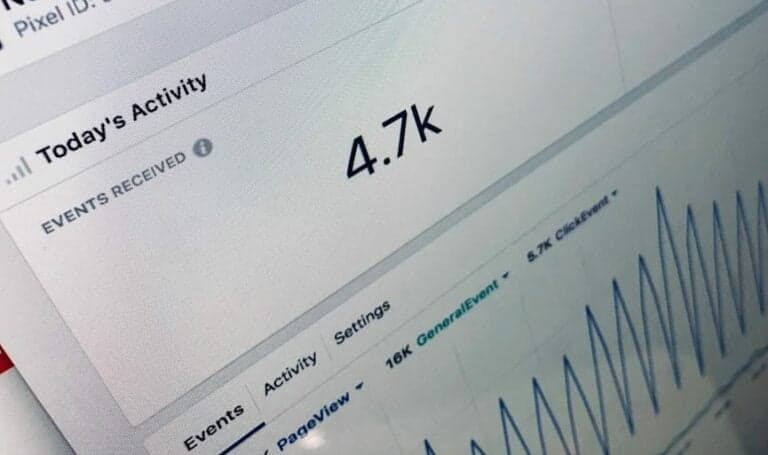Conversion rates are a critical metric for businesses of all sizes and industries. They measure the percentage of website visitors who take a desired action, such as making a purchase, signing up for a newsletter, or filling out a contact form. A high conversion rate indicates that your website is effectively persuading visitors to take action, while a low conversion rate suggests that there may be barriers preventing visitors from converting. In this article, we will explore various strategies and tactics to improve your conversion rates and drive business success.
Understanding the basics of conversion rates
Conversion rates are calculated by dividing the number of conversions by the number of website visitors and multiplying by 100 to get a percentage. For example, if you had 1000 website visitors and 50 conversions, your conversion rate would be 5%. It is important to set conversion goals based on your business objectives and track your progress regularly. This allows you to identify areas for improvement and make data-driven decisions to optimise your conversion rates.
The average starting conversion rate for website is between 2% to 3%.
Identifying and targeting your ideal audience
Knowing your target audience is crucial for improving conversion rates. By understanding their needs, preferences, and pain points, you can tailor your marketing messages and offers to resonate with them. Start by creating buyer personas, which are fictional representations of your ideal customers. Conduct market research, analyse customer data, and engage with your audience through surveys or social media to gather insights about their demographics, behaviors, and motivations. Use this information to create targeted marketing campaigns that speak directly to your ideal audience.
Creating compelling and relevant content
Content plays a pivotal role in driving conversions. It should be informative, engaging, and relevant to your target audience’s needs and interests. Start by conducting keyword research to identify the topics and keywords that are relevant to your industry and audience. Create high-quality blog posts, videos, infographics, or other forms of content that provide value and address your audience’s pain points. Use storytelling techniques to captivate your audience and make an emotional connection. Incorporate persuasive elements such as social proof, testimonials, and case studies to build trust and credibility.
Optimising your website for user experience
A user-friendly website is essential for driving conversions. Visitors should be able to navigate your site easily, find the information they need, and complete desired actions without friction. Start by optimising your website’s loading speed, as slow-loading pages can lead to high bounce rates and lost conversions. Ensure that your website is mobile-responsive, as an increasing number of users access the internet through mobile devices. Simplify your navigation menu and make it intuitive for users to find what they are looking for. Use clear and concise headlines, subheadings, and bullet points to make your content scannable. Include prominent and visually appealing calls-to-action (CTAs) that guide visitors towards conversion.
Streamlining the checkout process
A streamlined checkout process is crucial for reducing cart abandonment and improving conversion rates for e-commerce businesses. Start by minimising the number of steps required to complete a purchase. Implement a guest checkout option so that users can make a purchase without creating an account. Offer multiple payment options to cater to different preferences. Clearly display shipping costs and delivery times upfront to avoid any surprises at checkout. Use progress indicators to show users how far they are in the checkout process. Finally, optimise your thank-you page by including personalised recommendations or incentives to encourage repeat purchases.
Utilising social proof and testimonials
Social proof and testimonials are powerful tools for building trust with potential customers and increasing conversion rates. Social proof refers to the influence that others have on our behavior, and it can be leveraged through customer reviews, ratings, endorsements from influencers or industry experts, or social media mentions. Display customer testimonials prominently on your website, including their name, photo, and any relevant details that add credibility. Encourage satisfied customers to leave reviews on third-party review sites or social media platforms. Consider partnering with influencers or industry experts to endorse your products or services.
Implementing effective call-to-actions
Clear and compelling call-to-actions (CTAs) are essential for driving conversions. They should be prominently displayed and use action-oriented language that encourages users to take the desired action. Use contrasting colors and visually appealing buttons to make your CTAs stand out. Be specific about what users can expect when they click on a CTA, whether it’s signing up for a newsletter, downloading a free resource, or making a purchase. Experiment with different placement, wording, and design of your CTAs to find what works best for your audience.
Leveraging email marketing campaigns
Email marketing is a highly effective strategy for driving conversions. It allows you to nurture leads, build relationships with customers, and encourage repeat purchases. Start by building an email list by offering valuable content or incentives in exchange for email addresses. Segment your email list based on demographics, behaviors, or purchase history to send targeted and personalised messages. Use compelling subject lines that grab attention and entice recipients to open your emails. Provide valuable content in your emails, such as exclusive discounts, educational resources, or personalised recommendations. Include clear and prominent CTAs that direct recipients to take the desired action.
Conducting A/B testing for continuous improvement
A/B testing is a method of comparing two versions of a webpage or marketing campaign to determine which one performs better in terms of conversion rates. It allows you to identify areas for improvement and make data-driven decisions to optimise your conversion rates. Start by identifying the element you want to test, such as a headline, CTA, layout, or color scheme. Create two versions of the element, with one being the control (the original version) and the other being the variation (the modified version). Split your audience into two groups and randomly assign each group to see either the control or the variation. Measure the conversion rates for each group and analyse the results to determine which version performs better. Repeat this process with different elements to continuously improve your conversion rates.
Tracking and analysing data to make informed decisions
Tracking and analysing data is crucial for making informed decisions and optimising your conversion rates. Use web analytics tools such as Google Analytics to track key metrics such as website traffic, bounce rates, conversion rates, and user behavior. Set up goals and funnels to track specific actions that lead to conversions. Use heatmaps and click-tracking tools to understand how users interact with your website and identify areas for improvement. Regularly review your data, identify trends or patterns, and make data-driven decisions to optimise your conversion rates.
Improving conversion rates is essential for business success, and it requires a strategic approach that encompasses various aspects of your marketing and website optimization efforts. By understanding the basics of conversion rates, identifying and targeting your ideal audience, creating compelling content, optimising your website for user experience, streamlining the checkout process, utilising social proof and testimonials, implementing effective CTAs, leveraging email marketing campaigns, conducting A/B testing, and tracking and analysing data, you can continuously improve your conversion rates and drive business growth. Implement the tips provided in this article to optimise your conversion rates and achieve your business objectives.
If you’re looking to improve your conversion rates, reach out to Opdee today.
tl:dr FAQs
What are conversion rates?
Conversion rates refer to the percentage of website visitors who take a desired action, such as making a purchase or filling out a form.
Why is improving conversion rates important?
Improving conversion rates can lead to increased revenue and profitability for businesses. It also helps to optimise marketing efforts and improve the overall user experience on a website.
What are some top ways to improve conversion rates?
Some top ways to improve conversion rates include optimising website design and user experience, creating compelling and clear calls-to-action, offering incentives or discounts, and implementing A/B testing to determine what works best.
How can website design impact conversion rates?
Website design can impact conversion rates by influencing user behavior and perception. A well-designed website with clear navigation and a visually appealing layout can help to build trust and encourage visitors to take action.
What is A/B testing?
A/B testing is a method of comparing two versions of a webpage or marketing campaign to determine which one performs better. By testing different elements, such as headlines or calls-to-action, businesses can optimise their conversion rates and improve overall performance.








